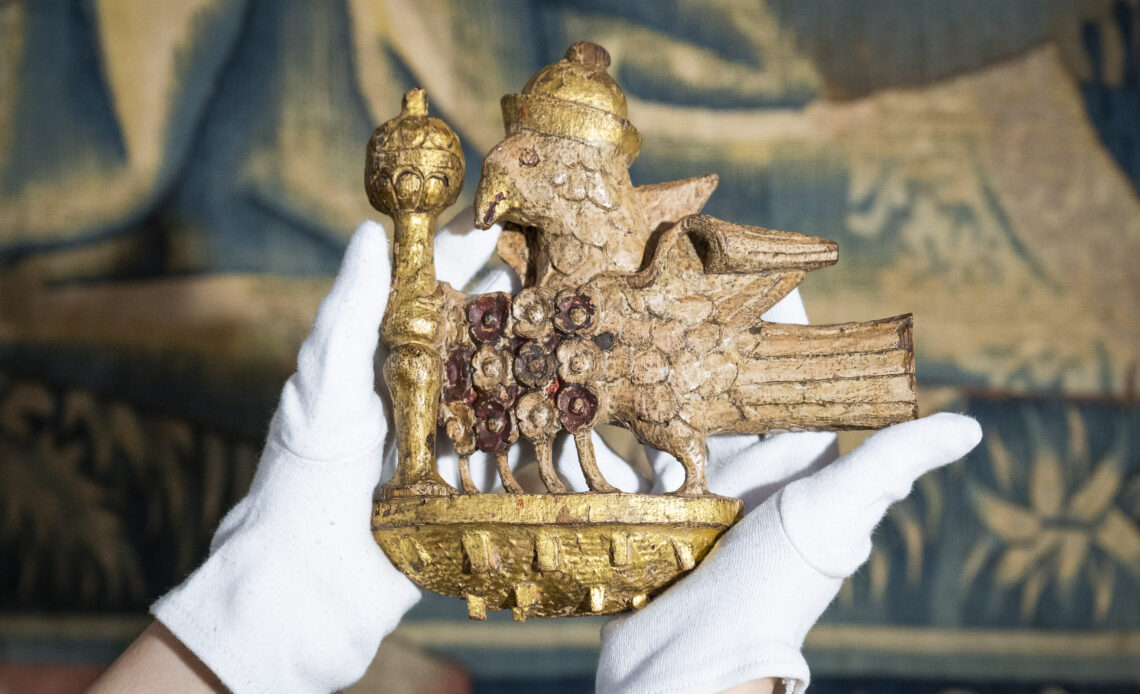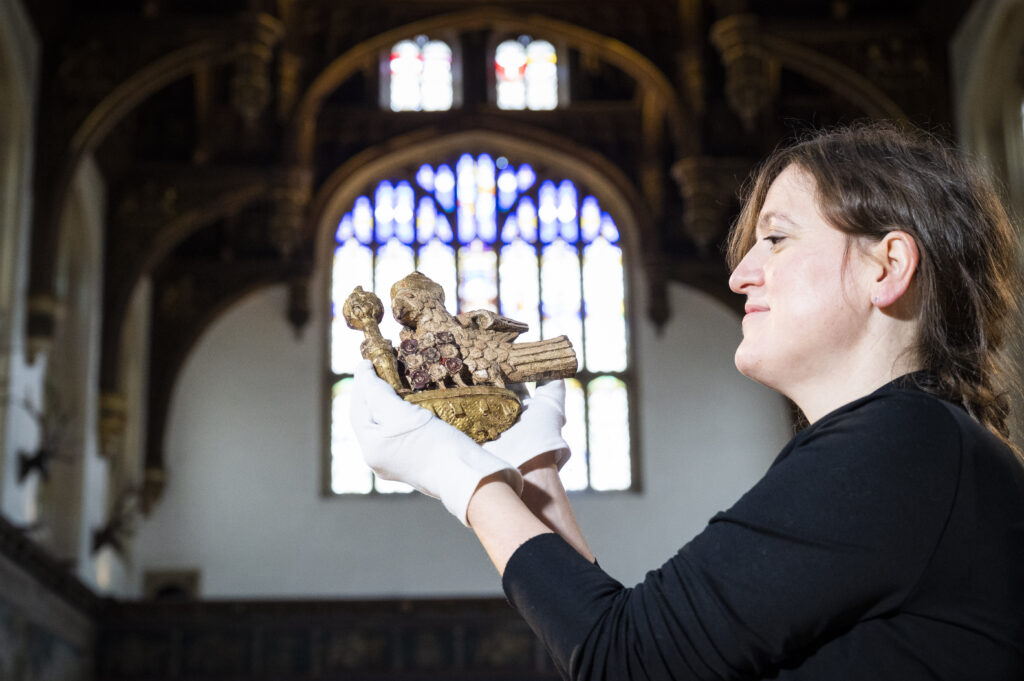
The infamous Tudor queen Anne Boleyn is still a source of fascination 500 years later, and starting 4 March, visitors to Hampton Court Palace will be able to see a special symbol associated with the doomed royal.
A carved heraldic badge of a crowned falcon on a tree stump with blooming roses — which Boleyn used as her device after becoming queen — will be on show at the palace, and the date of its display has a special meaning.
The announcement by Historic Royal Palaces coincides with the 500th anniversary of the first recorded mention of Anne Boleyn appearing before Henry VIII. Fans of TV’s “The Tudors” will remember the scene where Boleyn plays the part of Perseverance in a court masque in front of the King, and this marked the beginning of his fascination with the woman who would later become one of England’s most queens.
The falcon, which was covered in layers of dirt and wax, was discovered by antiques expert Paul Fitzsimmons. Realising it was a symbol of Boleyn, Fitzsimmons reached out to Historic Royal Palaces’ Joint Chief Curator, Tracy Borman.

When Fitzsimmons found the piece it was painted black, but conservation showed off its white, gold and red colours, with a white falcon being a symbol associated with Boleyn.
According to Historic Royal Palaces, “Its Tudor and York roses growing from a dead tree stump has been read as symbolising the fertility of the new queen at the time of her marriage, and Anne’s aspiration to wear the imperial crown which Henry offered at the time of his break with the Catholic Church.”
Sebastian Edwards, Deputy Chief Curator at Historic Royal Palaces, called the story behind the badge a “tantalising historic ‘what if'” and said that the organisation will need to wait to determine if it sat in the Hampton Court Great Hall “until the next time we erect a roof-height scaffold and compare it with those still in situ – which might not be for some years.”
Adding that Historic Royal Palaces’ research points toward the badge having been part of the Great Hall, he said that “either way, this is an incredibly rare example of Tudor royal ornamentation, imbued with the legend of Henry’s most famous Queen, which I hope will provide visitors to Hampton Court with a small taste of the jaw-dropping magnificence of the palace during the Tudor period.”
The falcon badge will be on display in the Great Hall at Hampton Court Palace and visitors can view it with their regular admission ticket.

